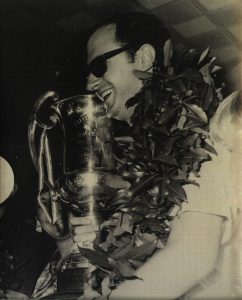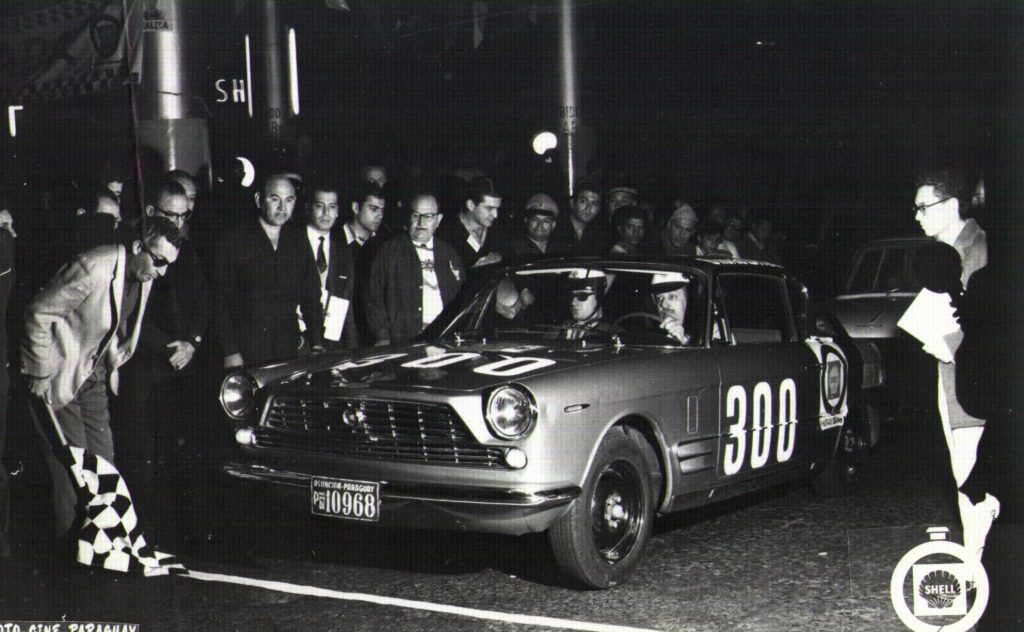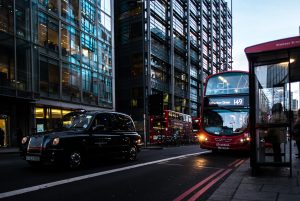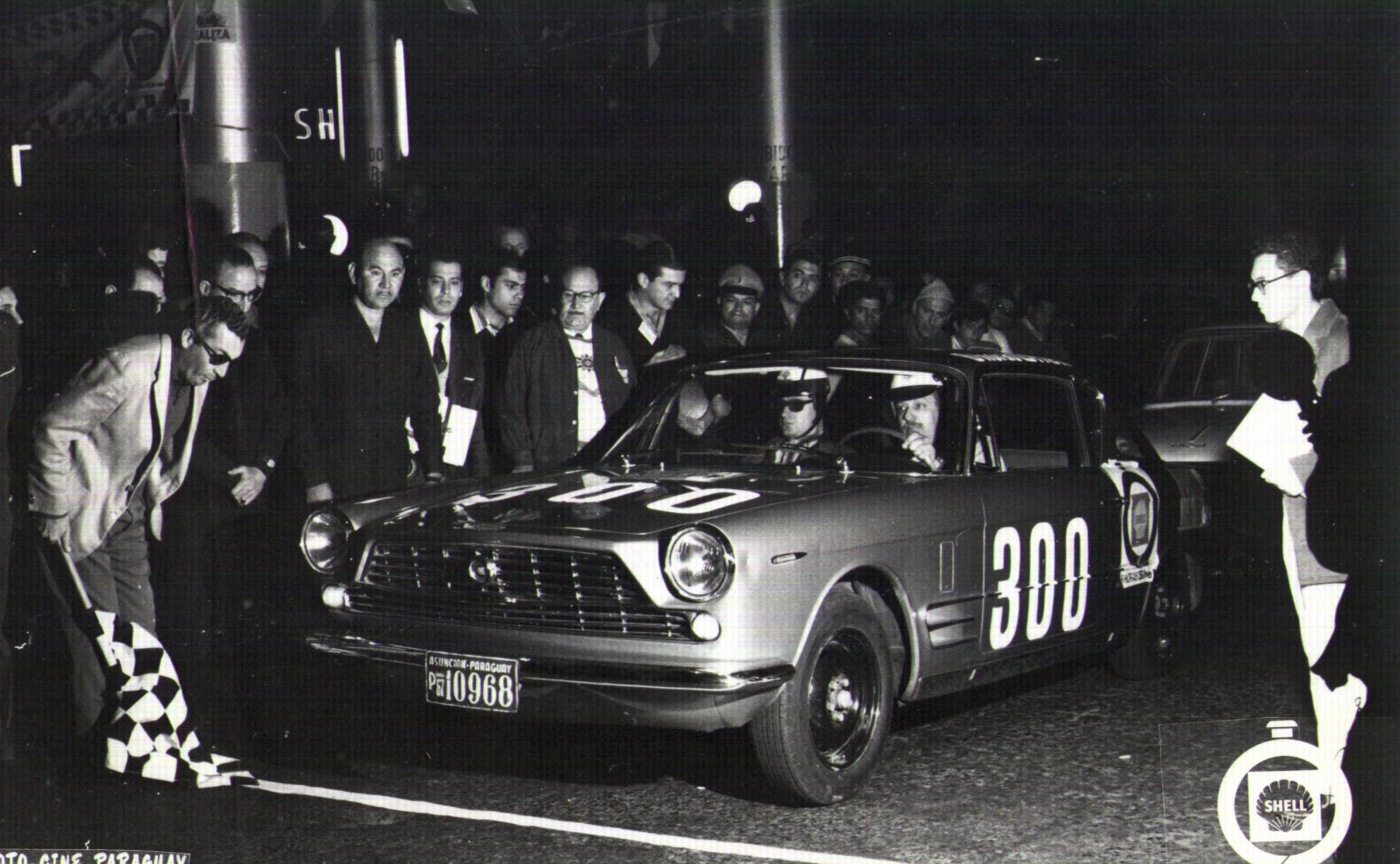
Back in the day, before the internet, Atari, or even color TV, my dad (pictured on the right receiving first prize) was a copilot in amateur rally races.
This was his hobby while away from home, working in Paraguay, in the early days of his career in finance. Fast and furious indeed! That is, until the fateful day his car took a three-turn rollover during a race.
Neither him nor the driver were seriously injured, fortunately. And even more so, he (and my mom) needed only one close call to be convinced that it was time to find a different hobby. But the passion for driving never waned, and he eventually passed it on to me.
Growing up with a car-loving dad, I got a bird’s eye view of what it was like to drive from a young age. Incorporated into the family conversation like any other car game, he showed us how the car responded to different terrains in different gears. Scooting around the Northwest of Argentina along winding mountain roads, we learned the rule of who backs up when you’re in a single lane road and come up against another car on a slope (it’s whoever was going uphill, the downhill driver has right of way).
Without noticing, I was learning key driving safety lessons from a seasoned expert. One who has only been involved in four very minor car accidents in 50+ years driving, none of which he caused.
Oftentimes, it was my job to be the official copilot during family road trips, whether I rode shotgun or not. My dad taught me to read road maps and give him directions. We got lost often enough, but we always made it back to where we wanted to be. And he explained each road sign in full detail. I became so besotted with learning the shapes and colors that I put a small AAA brochure into my regular rotation of reading materials. By golly I was going to be ready for my driving test! Mind you, I definitely had a ways to go, but ever the eternal planner I couldn’t resist learning in advance.

As a good copilot, I kept track of distances to our destination, possible rest stops and, more importantly, learned how to manage food and drink for our driver. Keeping the driver well hydrated and fed was key so he could stay alert to possible hazards and lead us off on to the next word game. This time, words that begin with “me”, and off we went.
Into my teenage years, the driving lessons got much more pragmatic and relevant. Dad began teaching me more basics on how the car works and how to tell when something is wrong, like the drag of a flat tire or the way the brakes feel on slippery roads. He showed me how a well tuned engine would start from zero in second gear, or even third. I still use that trick every few weeks to make sure my VW Golf is in tip top shape.
Among the many nuggets, the following two stand out yet today as the most useful in keeping me safe on the road. And I haven’t heard them anywhere else, have you? Here they go…
How to keep your distance

Most people think of keeping distance to the car in front of them as a matter of space. It’s not. It’s a matter of time!
Instead of guessing what “three car lengths” would be, my depth-perception-challenged eyes fared way better with my dad’s method:
- Find any fixed object ahead of the car in front of you.
- When they pass it, start counting “Mississippi-1, Mississippi-2”.
- If you’re hitting that same mark before you’re done saying “two”, you’re too close!
unica-web.com order generic cialis This medicine will not help in stopping pregnancy also.
You always want two seconds between you and the car in front. That’s how long your brain will need to maneuver safely. The immense genius of this technique is that the distance you keep will vary with your speed, i.e. you won’t cover as much ground doing 30 as you would doing 65, ensuring you always have a safe decision time.
Don’t let them blind you

Ever drive at night on a nice, dark country road and see a big ugly glaring set of headlights is coming at you? Yikes, you’re blind! Not if you try my dad’s method.
As soon as you detect the glare, fix your eyes on the white line at the edge of the road. It will keep you on the lane, since you’re still able to judge your position on the road, and allow the glare spot to form on your retina away from your usual center of vision. Yes, it will still leave a “light mark”, just not right in front of you.
My personal addenda: use your palm to block the side view mirror, which also works if a taller car is too close and blinding you from behind.
Heads up, you’re driving a multi-ton lethal machine!
There you have it, my two most favorite safe driving lessons from Dad. Some others, more well known, than he exercised methodically:
- Always drive well rested, and stay hydrated
- Never, ever, ever drive under the influence of alcohol or drugs (legal or not)
- During long drives, take breaks at least every two hours, walk around, breathe fresh air
- Check all fluid levels and tire pressure before any long trip
- Service your car regularly!
And finally, some of my favorite online resources on driving safety:
- https://www.safercar.gov
- http://www.nsc.org/learn/Pages/nsc-on-the-road.aspx
- http://exchange.aaa.com/safety
Do you have a safe driving tip you love using? Share it in the comments or drop me a line!


Leave a Reply
You must be logged in to post a comment.